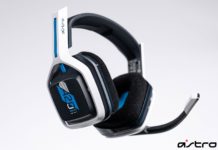Dragon Ball Z fans have seen and played a lot of
good fighting games. Take the word “fighting” out of that sentence, however, and
you eliminate the Budokai, Budokai Tenkaichi and Burst Limit series. That
leaves … well, what exactly? DBZ’s developers have been so focused on making good
fighting games that they haven’t bothered to consider what another genre might
bring to the table. Something different, innovative, or completely unexpected?
Not quite. But if you are a fan of The Legend of
Zelda: Phantom Hourglass, Atari has a Dragon Ball game – forget the “Z,” this
one is based on the original saga – that will be right up your alley: Dragon
Ball Origins.

Set in the early days of Goku’s adventures,
Origins is the tale of the most popular Super Saiyan and his eccentric friend,
Bulma. Fighting alongside each other to defeat the enemy, players have full
control over Goku. You may choose to run through the environment – a 3D world
with an isometric view – with either the D-pad or the touch screen. As expected,
the latter type is akin to Zelda’s controls. Touch anywhere on the bottom screen
to make Goku face in that direction; keep the stylus (or your finger, if you
prefer) on the screen to make him walk – continue holding and he’ll eventually
start to run.
Though you have a choice in character movement,
only the touch screen is used for attacking. Zelda fans know the drill: tap
enemies to unleash an array of successive hits. But there are a few twists not
used by the Hyrulian hero. Goku travels with his Power Pole, a handy weapon that
can expand several feet to attack enemies without coming in close contact. It is
also used to destroy boulders, which may prevent Goku from hopping across
platforms. (Another Zelda-esque feature: jumping is automatic.)
Most impressive, however, is the way it’s used to
attack enemies in a more aggressive manner. By touching Goku on the screen,
followed by a quick half-circle drawing, players can perform a wide attack that
more forcefully deals with the enemy threat. Enemies are a common occurrence in
this game. Though you’ll spend some time moving blocks and solving minor puzzles
to help Bulma – a non-playable character – progress through the environment, a
big portion of Origins is spent fighting.

Most players will love the controls, which are
very well designed. But they are not flawless. I’m not sure if it’s the
environment, which feels a little cramped from time to time, or the controls
themselves, but there were times when the game didn’t register the move I had
performed. This is most common with level interactions, particularly those
involving giant square boulders that need to be pushed out of the way or into a
platform gap.
The moment went something like this: I run up to
the boulder and, since Goku has not yet begun to push it, nothing happens. I
lift the stylus and reapply it to the touch screen – if I’m lucky, Goku will now
push it into place. But nearly 50% of the time he just kept running, usually
into the boulder but sometimes to the side of it. This is what happens when you
add more than one gameplay mechanic to the same button (or in this case, the
touch screen) – when the player tries to perform it, mistakes are bound to
occur. It gets easier with time, as you’ll learn to interpret what the game
wants and provide it more naturally. But it’s still annoying.
Origins’ graphics look terrible in these
screenshots, mostly because the top screen appears to blend into the bottom
screen. That is not the case. In fact, Origins is actually a very good-looking
game. Goku’s small, semi-deformed character model is a nice re-creation of his
anime counterpart. His animations are smooth, his moves look good, and the game
performs well without any slowdown.
The camera is locked into place, so don’t bother
looking for a way to swivel it around. But you will get some help from the top
screen, which shows more of the environment (think of it as a widescreen view
flipped on its side). As you can see, this is not properly conveyed by the
screenshots, which also hide the detail of the characters and environments.

Dragon Ball Origins doesn’t break new ground for
the action genre, but it definitely prevails as another great adventure. The
touch controls work well most of the time, and if you have the patience to
overcome their slight inconsistencies, you’ll grow to love the mechanics. Worth
buying if you love Dragon Ball/Dragon Ball Z and action games in this style;
worth renting for everyone else.
|
|
Gameplay: 8.0
Phantom Hourglass meets the world of Dragon Ball.
Graphics: 8.0
Far more impressive than these odd-looking screenshots.
Sound: 7.0
Occasionally enjoyable but most often repetitive, Origins won’t be a game
that makes you crank those tiny DS speakers.
Difficulty: Easy
Not as thought-provoking as an action/RPG.
Concept: 7.0
Origins probably wouldn’t be here without Zelda. Even if it would, Zelda
still came a year sooner, thus reducing some of the "wow" factor that could have
been incurred by players first experiencing the touch screen bliss of Dragon
Ball.
Multiplayer: N/A
No multiplayer functionality, but you can trade collectibles with a friend.
Overall: 8.0
Die-hard Dragon Ball fans can’t go wrong with Origins.









